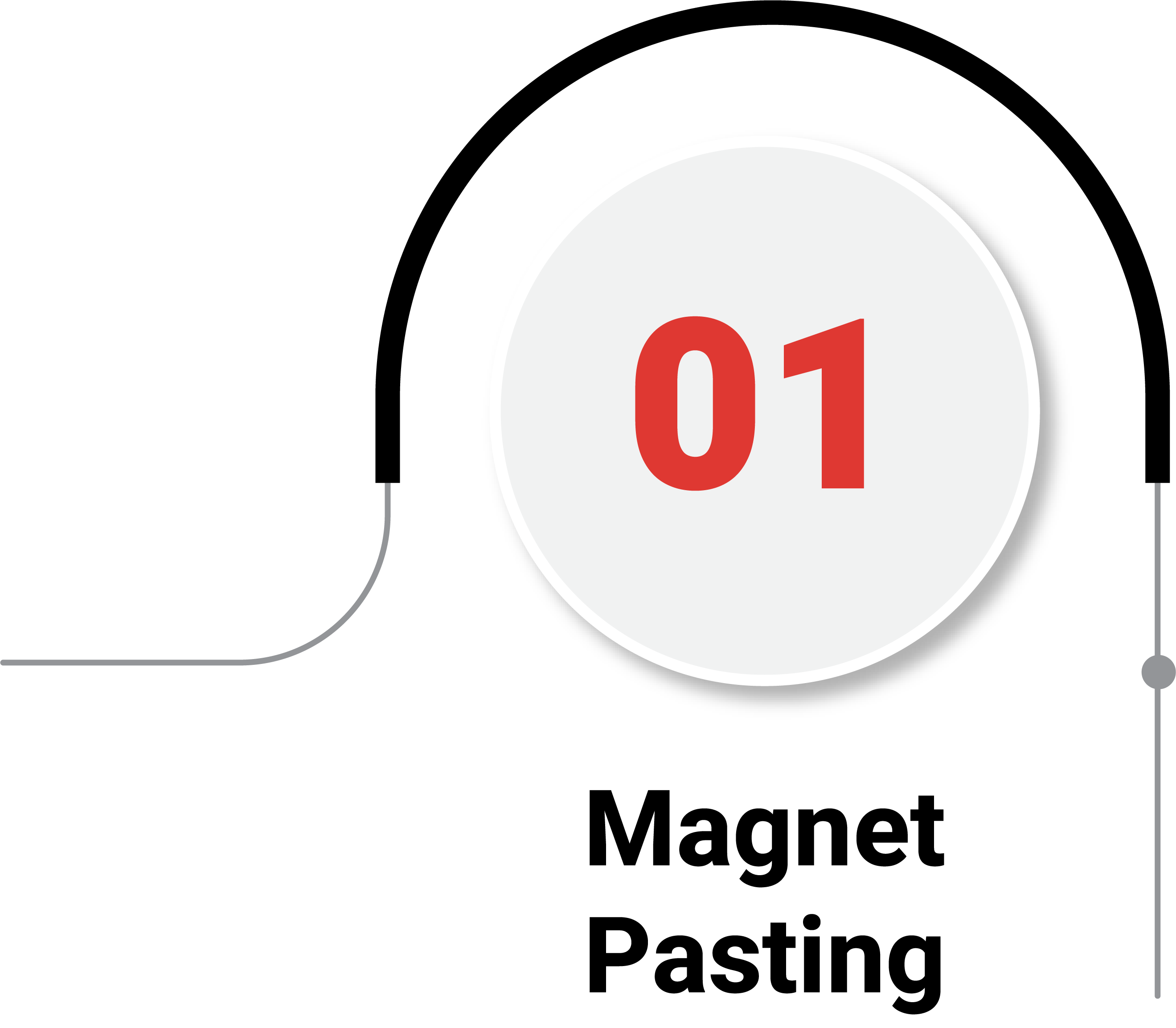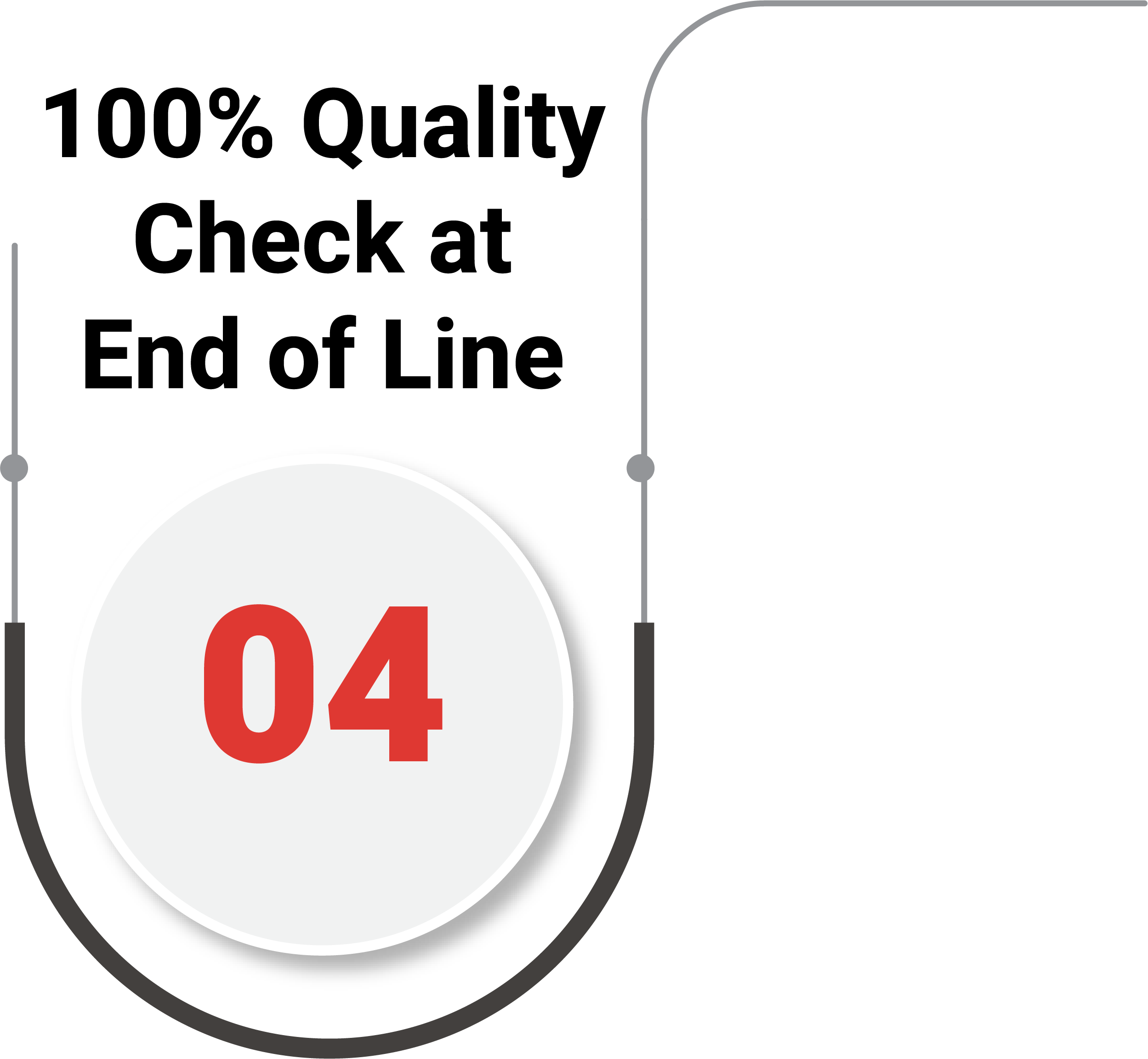Our Process.
Bringing the best hub motors to the world with cutting-edge manufacturing processes.
Our Process.

With cutting edge technology, HYM is bringing in state of the art assembly line processes where semi-finished products move from workstation to workstation. Parts are added in sequence until the final assembly is produced.
Magnet Pasting:
Magnet pasting is a process used in hub motors for electric vehicles (EVs) to secure the magnets inside the motor. It involves applying an adhesive to the magnets and mounting them onto the rotor.
Automatic Magnet Dispensing:
Automatic magnet dispensing systems can improve efficiency and accuracy in a variety of applications.
Dynamic balancing is a process that involves adjusting the balance of an object by adding or removing weight. The goal of this process is to achieve a state of equilibrium, where the object is evenly balanced and stable.
HYM has advanced diagnostic tools that use precision electronic sensors to measure the balance of an object. These tools gather information on the weight distribution of the object and can identify areas that are too heavy or too light. This information is then used to determine the amount of weight that needs to be added or removed in order to achieve a balanced state. This process is important for ensuring the stability and safety of the object, especially in applications such as rotating machinery or vehicles.


A stator is the stationary part of an electric motor or generator that houses the windings that produce the magnetic field around the rotor. In an electric bike, the stator windings are an important component that helps generate the power needed to propel the bike.
There are several factors to consider when designing and manufacturing stator windings for an electric bike:
- Current density
- Wire size
- Winding pattern
- Insulation
- Thermal management
- Manufacturing process
Overall, the design and manufacturing of stator windings for an electric bike requires a thorough understanding of electrical and mechanical principles, as well as attention to detail and careful quality control.
End-of-line testers are responsible for conducting final testing on products as they come off the production line. These tests are designed to ensure that the products meet all of the required specifications and are fully functional. In a manufacturing environment, test systems must be able to simulate a wide range of conditions that the equipment may encounter in the field, such as different loads, temperatures, vibrations, etc. This allows the testers to measure how the equipment responds to these conditions and identify any issues that may arise.
The end-of-line testing process is critical for ensuring the quality of the final product, and it is an important step in the overall manufacturing process. It helps to identify and correct any defects or issues before the products are shipped to customers. It also helps to improve the overall reliability and performance of the products.
100% testing of
Efficiency
Our motor performance testing services can help evaluate the motor’s performance and compare it to competitors’. This can help you differentiate our motors in the market by providing objective data on their performance characteristics, such as power, efficiency, torque, and speed. This will help improve our product development, optimize our manufacturing process, and increase our market competitiveness.
Characteristic curve
A characteristic curve for a motor is a graph that shows how the motor’s output performance changes in relation to its input power.
The characteristic curve is a useful tool for evaluating the performance of an e-mobility motor and comparing it to other motors. It can also be used to optimize the performance of the bike by adjusting the controller’s settings.
NVH ( Noise, Vibration and Harshness )
NVH (Noise, Vibration, and Harshness) testing is a type of testing that is used to evaluate the noise and vibration characteristics of a vehicle. It is used in the automotive industry to reduce the level of noise and vibration inside and outside the vehicle, design vehicles with better NVH characteristics, and ensure the quality of the finished product. NVH testing is an important aspect of vehicle development because it can affect the overall driving experience, comfort, and customer satisfaction. The test can be conducted at different stages of the vehicle development process, from early design to prototype, pre-production, and production. The test results are then used to improve the design, validate the design, and make necessary changes to meet the target requirements.


